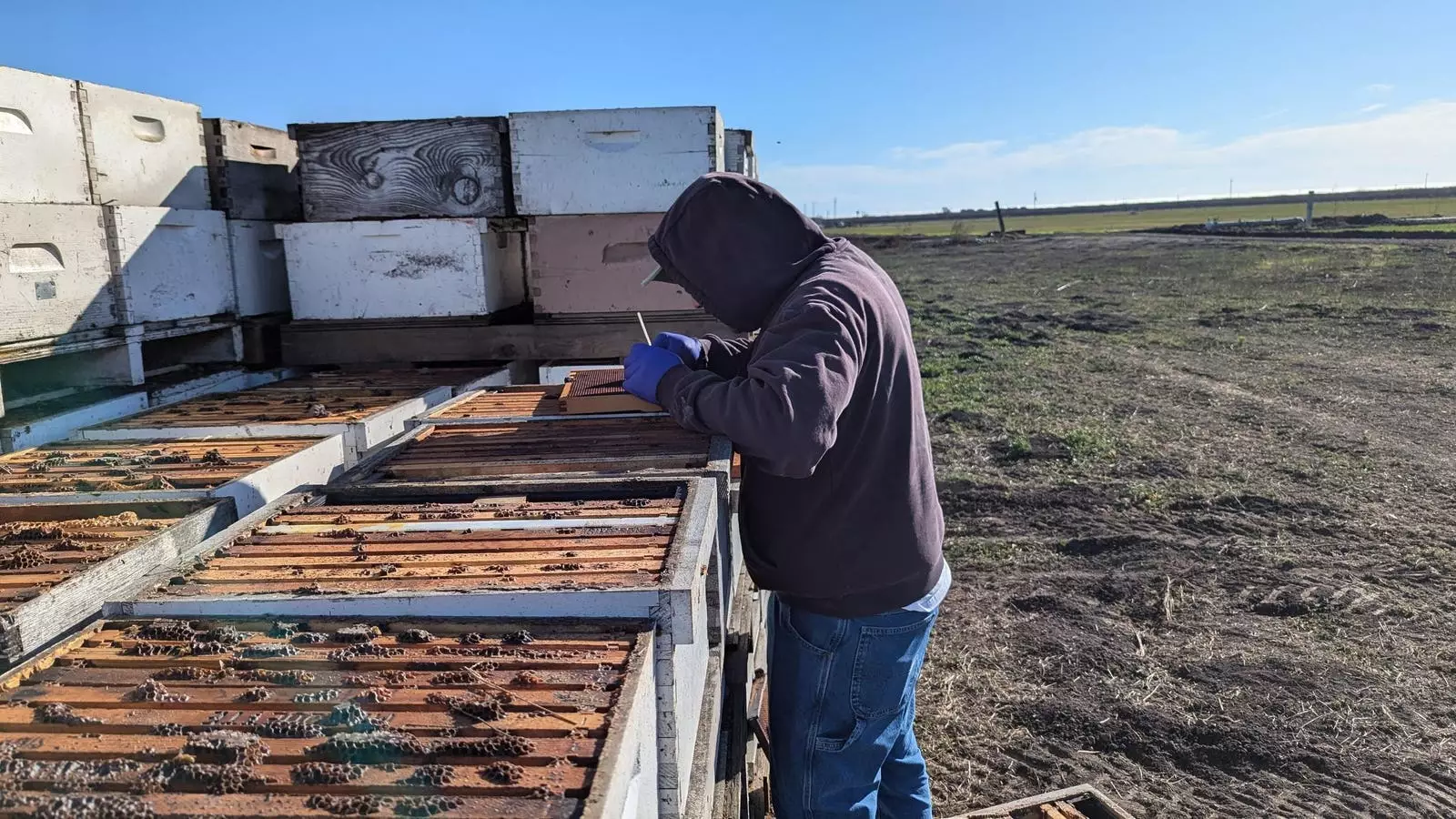This past winter witnessed an alarming and unprecedented decline in bee populations across the United States, marking a devastating period for an industry that plays a crucial role in food production and ecosystem health. According to a survey conducted by various bee industry organizations, beekeepers reported losses exceeding 50% of their colonies, translating to financial damages surpassing $139 million. This massive die-off is raising urgent concerns as the almond pollination season approaches, a time when nearly all of the nation’s 3 million honey bee colonies are mobilized for service.
The situation has reached a crescendo of panic within the beekeeping community. As beekeepers reopened their operations after winter, they discovered extensive losses, with some operations experiencing a shocking 70% to 100% hive mortality. Researchers involved in the survey, including experts from the American Beekeeping Federation and Project Apis m, stated that the issue involves staggering die-off rates, complicated by a timeline that aligns with critical pollination periods for almonds and a variety of fruits including blueberries, cherries, and apples.
Danielle Downey, executive director of Project Apis m, expressed the urgency of the matter, noting that the beekeeping industry is scrambling to identify the cause of this crisis. The fact that there is no clear explanation for the bee die-off adds another layer of distress to an already precarious situation.
Patterns of Mortality and Feared Consequences
The patterns of mortality observed are reminiscent of the Colony Collapse Disorder (CCD) that affected bee populations in 2007-2008, characterized by the sudden disappearance of adult bees while leaving behind honey and young larvae. Recent investigations reveal a similar trend: colonies have been found dead with ample honey and minimal remaining brood, reinforcing the suspicion that something unprecedented is at play.
Regarding these concerning trends, beekeeper Blake Shook highlighted the current losses as particularly alarming, noting that the mortality has risen from an average rate of 15% to a staggering baseline of 45%, demonstrating a troubling upward trajectory. The sheer volume of bee deaths raises reasonable apprehension about the sustainability of the industry, leading many to question whether beekeepers can remain viable amidst such overwhelming losses.
The bee death toll is not merely an isolated phenomenon but a nationwide crisis with implications for the agricultural economy. Research efforts are underway to analyze samples for potential viral infections, parasitic infestations, and pesticide residues that could be implicated in this recent surge of mortality. Traditional culprits like the varroa mite, a known pest of honey bees, are being scrutinized, yet so far, they do not appear to be the sole factor.
Downey pointed out that the consistent pressure on bee colonies from various sources—such as harmful bacteria, pesticide exposure, nutritional deficiencies, and the stress induced by extensive travel for pollination—threatens to push the industry to a breaking point. The uncertain future looms large, with the specter of food shortages due to insufficient pollination starkly looming.
The implications of the dying bee populations are not confined to beekeepers. Farmers are beginning to feel the pinch, as a reduced bee population could drastically impair pollination efficiency. This, in turn, would lead to potential shortages or increased prices for staple crops that rely heavily on bee pollination. Concerns grow that inadequate supplies of bees could undermine not only the almond crop but various other fruits vital to consumers.
As beekeepers grapple with an economic burden accentuated by the rising costs associated with replacing lost hives, many face tough choices regarding the sustainability of their operations. The uncertainty is aggravated by competition from cheaper overseas honey—increasing pressure on domestic honey producers who are already reeling from unprecedented losses.
The fallout from the current bee crisis has led to a disturbing trend: hive theft. Reports suggest that some desperate beekeepers resort to stealing bees from others to meet the overwhelming demand for pollination services, revealing an ethical dimension to the crisis that many never thought possible. Organizations like the California State Beekeepers Association are stepping up efforts to combat this issue, highlighting the growing urgency to address the circumstances surrounding hive theft which has surged in recent years.
As the investigation into the causes of bee mortality unfolds, the beekeeping industry stands at a crossroads. With so many variables and unknown factors contributing to bee health, immediate action is needed to safeguard both pollinator populations and the agriculture sector they support. The survival of bees is not just an environmental issue—it’s a critical element in ensuring food security and sustaining the livelihoods of both farmers and beekeepers. Without urgent interventions, we risk spiraling further into a crisis with far-reaching consequences for food production and biodiversity, urging society-wide engagement and innovative solutions to this growing problem.


Leave a Reply